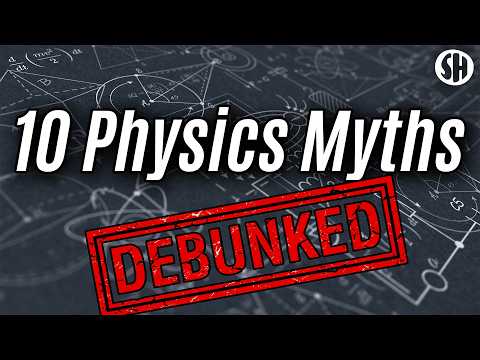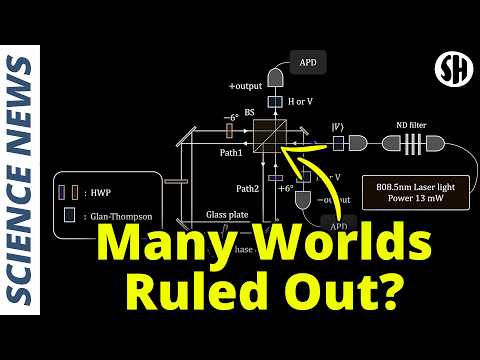https://www.europesays.com/us/65945/ Optimizing Diamond as a Quantum Sensor #Physics #Science #UnitedStates #UnitedStates #US
#physics
#PhysicsFactlet
An improvement over the bisection method is the so-called "false position" method, where instead of dividing the bracket region in two, you cut at the point where the line through the two bracket extremes crosses zero.
A Denver dino museum makes a find deep under own parking lot. Like 'a hole in one from the moon.'
La Grande Dune du Pilat
Southwest of Bordeaux in France stands Europe’s tallest sand dune, La Grande Dune du Pilat. Some 2.7 kilometers long and over 100 meters high, this dune took shape here over thousands of years. It moves inland a few meters every year as winds blowing from the Atlantic push sand up its shallow seaward side to the dune’s crest. There, sand will avalanche down the steeper leeward side, advancing the dune little by little. The dune’s accumulation has not been steady; during cooler and drier times, sand has collected there, but it took warmer and wetter climes to grow the forests that have helped stabilize the soil and build the dune higher. Humanity has played a role as well, at times introducing new tree species to stabilize the dune. (Image credit: W. Liang; via NASA Earth Observatory)
https://www.europesays.com/uk/263889/ Alpha males are rare among our fellow primates: scientists #Materials #Nanotech #Physics #PhysicsNews #Science #ScienceNews #Technology #TechnologyNews #UK #UnitedKingdom #wildlife
Arp 87: Merging Galaxies from Hubble
* Image Credit: NASA, ESA, Hubble
https://www.nasa.gov/
https://esa.int/
https://science.nasa.gov/mission/hubble/
* Processing: Harshwardhan Pathak
https://skiesandscopes.com/harshwardhan-pathak/
Explanation:
This dance is to the death. As these two large galaxies duel, a cosmic bridge of stars, gas, and dust currently stretches over 75,000 light-years and joins them. The bridge itself is strong evidence that these two immense star systems have passed close to each other and experienced violent tides induced by mutual gravity. As further evidence, the face-on spiral galaxy on the right, also known as NGC 3808A, exhibits many young blue star clusters produced in a burst of star formation. The twisted edge-on spiral on the left (NGC 3808B) seems to be wrapped in the material bridging the galaxies and surrounded by a curious polar ring. Together, the system is known as Arp 87. While such interactions are drawn out over billions of years, repeated close passages will ultimately create one merged galaxy.
Although this scenario does look unusual, galactic mergers are thought to be common, with Arp 87 representing a stage in this inevitable process. The Arp 87 dancing pair are about 300 million light-years distant toward the constellation of the Lion (Leo). The prominent edge-on spiral galaxy at the far left appears to be a more distant background galaxy and not involved in the on-going merger.
https://en.wikipedia.org/wiki/Arp_87
https://science.nasa.gov/missions/hubble/dancing-with-the-stars-takes-on-a-whole-new-twist/
https://www.cv.nrao.edu/~jhibbard/MergeSeq/mergeseq.html
https://www.cv.nrao.edu/~jhibbard/MergeSeq/1996AJv111p655.pdf
https://apod.nasa.gov/apod/ap140715.html
https://apod.nasa.gov/apod/ap061111.html
https://ui.adsabs.harvard.edu/abs/1972ApJ...178..623T/abstract
I am almost missing the good old days in which retired engineers or new undercover Einsteins used to sent me their theories of everything (without equations, or with un-intelligible scribbles etc).
Now instead, they send me "their interesting conversations with Grok/ChatGPT" and I just want to cry in despair.
The #AI bubble has even managed to ruin the fun in #retired_engineers, and I cannot forgive the AI hype for this (besides other things).
2025 July 14
NGC 2685: The Helix Galaxy
* Image Credit & Copyright: Stefan Thrun
https://app.astrobin.com/u/Stefan-Harry-Thrun#gallery
Explanation:
What is going on with this galaxy? NGC 2685 is a confirmed polar ring galaxy - a rare type of galaxy with stars, gas and dust orbiting in rings perpendicular to the plane of a flat galactic disk. The bizarre configuration could be caused by the chance capture of material from another galaxy by a disk galaxy, with the captured debris strung out in a rotating ring. Still, observed properties of NGC 2685 suggest that the rotating helix structure is remarkably old and stable. In this sharp view of the peculiar system also known as Arp 336 or the Helix galaxy, the strange, perpendicular rings are easy to trace as they pass in front of the galactic disk, along with other disturbed outer structures. NGC 2685 is about 50,000 light-years across and 40 million light-years away in the constellation of the Great Bear (Ursa Major).
https://app.astrobin.com/i/3a3kzg?r=B
https://en.wikipedia.org/wiki/NGC_2685
https://ui.adsabs.harvard.edu/abs/2009A%26A...494..489J/abstract
https://science.nasa.gov/universe/galaxies/types/
https://apod.nasa.gov/apod/ap190325.html
https://mathinsight.org/applet/parametrized_helix
https://en.wikipedia.org/wiki/Ursa_Major
TOPIC> Polar Ring Galaxies
From Wikipedia, the free encyclopedia
A polar-ring galaxy is a type of galaxy with an outer ring of gas and stars that rotates over the poles of the galaxy. These polar rings are thought to form when two galaxies gravitationally interact with each other. One possibility is that a material is tidally stripped from a passing galaxy to produce the polar ring. The other possibility is that a smaller galaxy collides orthogonally with the plane of rotation of the larger galaxy, with the smaller galaxy effectively forming the polar-ring structure.
The best-known polar-ring galaxies are S0s (lenticular galaxies), but from the physical point of view they are part of a wider category of galaxies, including several ellipticals.
The first four S0 galaxies that were identified as polar-ring galaxies were NGC 2685, NGC 4650A, A 0136 -0801, and ESO 415 -G26. While these galaxies have been extensively studied, many other polar-ring galaxies have since been identified. Polar-ring S0 galaxies may be found around 0.5% of all nearby lenticular galaxies, and it is possible that 5% of lenticular galaxies may have had polar rings at some point during their lifetimes.
The first polar-ring elliptical galaxies were identified in 1978. They were NGC 5128, NGC 5363, NGC 1947 and Cygnus A, while the polar-ring S0 galaxies NGC 2685 and NGC 4650A were at that time indicated as resulting from similar formation processes. Only some years later, when the first observations of the stellar and gas motion of polar-ring elliptical and S0 galaxies were possible with a better spectroscopic technology, the external origin of the gaseous rings was clarified. In addition to the best-known example, NGC 5128 (Cen A), a very regular polar ring elliptical, is NGC 5266.
https://en.wikipedia.org/wiki/File:NGC_660_Polar_Galaxy_Gemini_Observatory.jpg
A Century of Quantum Mechanics
https://home.cern/news/news/physics/century-quantum-mechanics
https://www.europesays.com/uk/263074/ Scientists Say Earth May Be Trapped Inside a Huge, Strange Void #Physics #Science #UK #UnitedKingdom
Whatever would Hugh Everett think?
Debunk yourself
Debunk yourself
If you don't debunk yourself, nobody gonna give a good cahoot na na na na
Debunk yourself
I did, and I'm now a triathlete!
https://www.europesays.com/uk/262085/ Elephants gesture with an intention to communicate their desires, study finds #Materials #Nanotech #Physics #PhysicsNews #Science #ScienceNews #Technology #TechnologyNews #UK #UnitedKingdom #wildlife
2025 July 13
Planetary Nebula Mz3: The Ant Nebula
* Image Credit: NASA, ESA, R. Sahai (JPL) et al., Hubble Heritage Team
https://www.nasa.gov/
https://www.esa.int/https://science.jpl.nasa.gov/people/Sahai/
https://www.jpl.nasa.gov/
Explanation:
Why isn't this ant a big sphere? Planetary nebula Mz3 is being cast off by a star similar to our Sun that is, surely, round. Why then would the gas that is streaming away create an ant-shaped nebula that is distinctly not round? Clues might include the high 1000-kilometer per second speed of the expelled gas, the light-year long length of the structure, and the magnetism of the star featured here at the nebula's center. One possible answer is that Mz3 is hiding a second, dimmer star that orbits close in to the bright star. A competing hypothesis holds that the central star's own spin and magnetic field are channeling the gas. Since the central star appears to be so similar to our own Sun, astronomers hope that increased understanding of the history of this giant space ant can provide useful insight into the likely future of our own Sun and Earth.
https://esahubble.org/news/heic0101/
https://science.nasa.gov/asset/hubble/the-ant-nebula-menzel-3-fiery-lobes-protrude-from-dying-sun-like-star/
https://en.wikipedia.org/wiki/Mz_3
https://ui.adsabs.harvard.edu/abs/2004AJ....128.1694G/abstract
https://apod.nasa.gov/apod/ap971106.html
TIL about the super cool phenomenon of supercooled freeze pop popsicles when my son took one out of the freezer in a still liquid form and we watched it crystalize after he squeezed it. Physics is amazing!
Lithuania bids to save Baltic seals as ice sheets recede https://www.byteseu.com/1188958/ #Lithuania #Materials #Nanotech #Physics #PhysicsNews #Science #ScienceNews #Technology #TechnologyNews
It's "bullshit."
This is what you miss out on by not taking college courses. Cursing lecturers. Also, ones who write inordinately long proofs and then get lost in them, so they dismiss the class to try to figure out where life went wrong for them. This actually happened in a community college algebra class for a very simple concept, which the lecturer had a very long and inelegant proof of.
https://www.europesays.com/us/60576/ Elephants gesture with an intention to communicate their desires, study finds #Materials #Nanotech #Physics #PhysicsNews #Science #ScienceNews #Technology #TechnologyNews #UnitedStates #UnitedStates #US #Wildlife
#Orbit #Retrograde #Saturn #SpaceExploration #Space #Astronomer #Astronomy #SpaceScienceSaturday #YorkU #Observatory #AllanICarswellObservatory #Stargazing #YorkUniverse #Telescope #Planets #Stars #Science #Physics #Toronto #YorkUObservatory #AICO #Cosmos #LearnAstronomy #SpaceFacts


